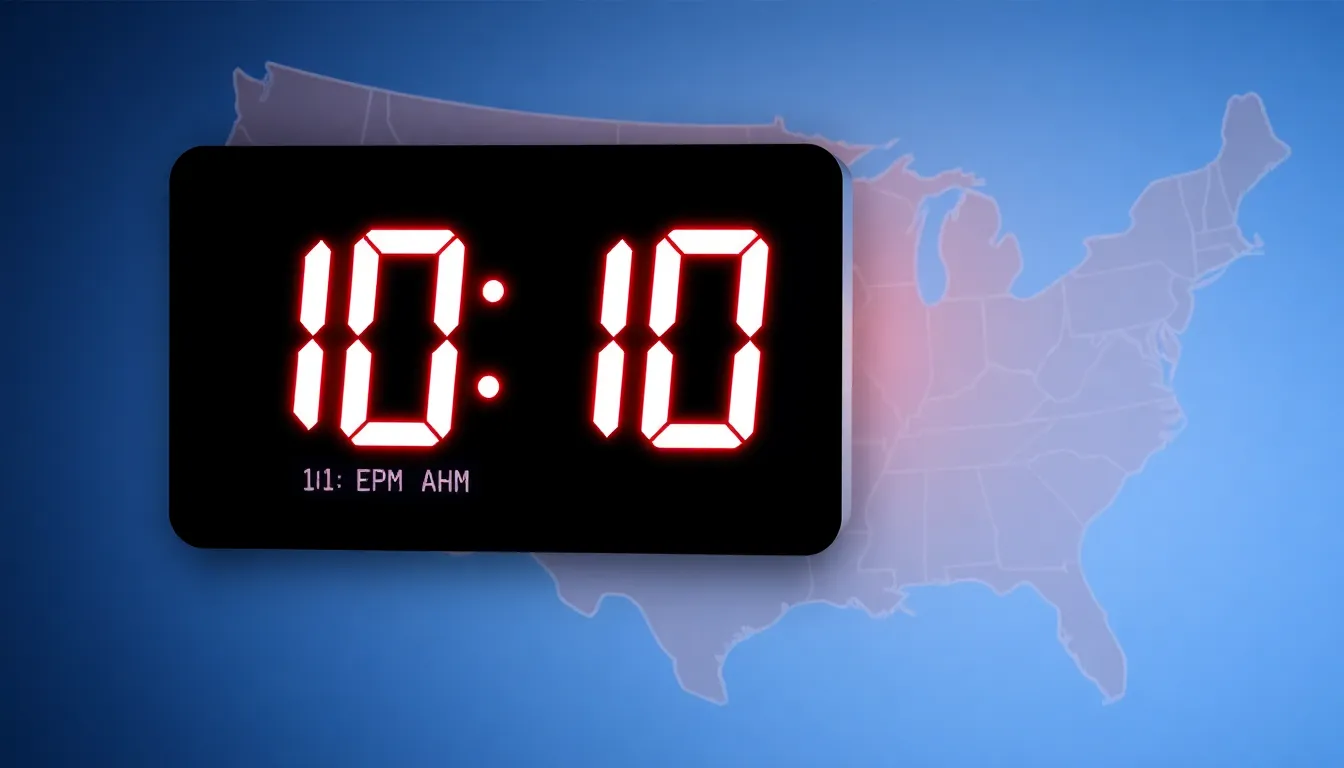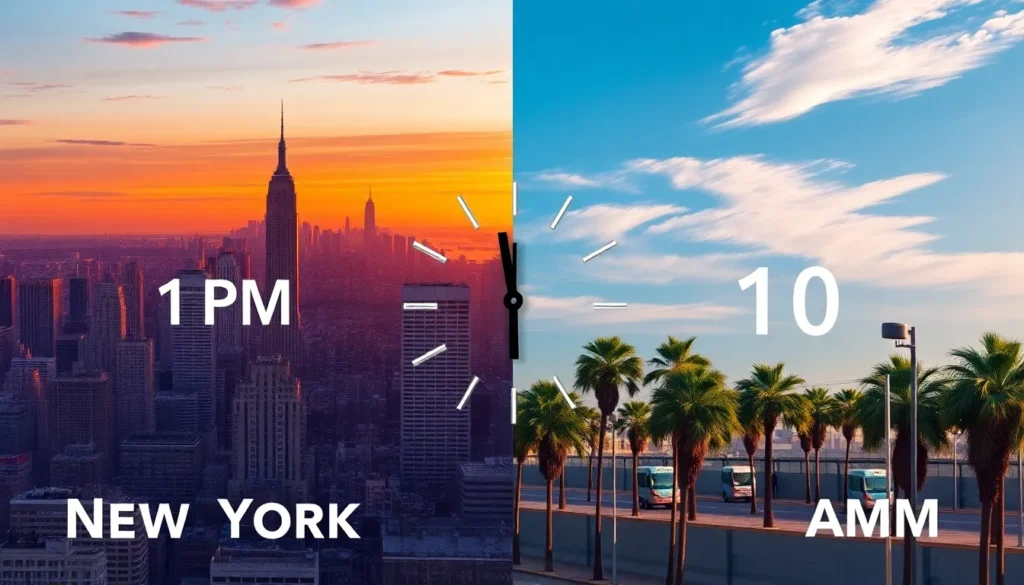Table of Contents
ToggleUnderstanding time zones is essential in our interconnected world. When it’s 1 PM Eastern Time, many people wonder what time it is on the West Coast. The difference between Eastern and Pacific Time can impact everything from business meetings to social gatherings, making it crucial to grasp this conversion.
Eastern Time is three hours ahead of Pacific Time, meaning that when it’s 1 PM in New York, it’s only 10 AM in Los Angeles. This time difference can influence scheduling and communication, especially for those coordinating events across these regions. By mastering this simple conversion, individuals can enhance their planning and ensure they stay connected, no matter the distance.
Understanding Time Zones
Understanding time zones is crucial for navigating scheduling across regions. Eastern Time (ET) is three hours ahead of Pacific Time (PT). This difference affects various activities, such as business meetings and social events.
Time zones operate on a 24-hour clock format, providing clarity in global interactions. Areas adhering to Eastern Time include New York and Washington, D.C., while cities like Los Angeles and San Francisco follow Pacific Time.
The significance of synchronization should not be understated. Misaligned schedules can lead to missed appointments or miscommunications. Awareness of time zone differences fosters better planning and effective coordination.
To convert 1 PM Eastern Time to Pacific Time, subtract three hours, resulting in 10 AM Pacific Time. This straightforward calculation simplifies managing schedules across both time zones.
Converting 1PM Eastern Time to Pacific

Understanding the time conversion between Eastern Time (ET) and Pacific Time (PT) facilitates effective scheduling. When it’s 1 PM ET, it translates to 10 AM PT.
The Basics of Time Conversion
Eastern Time operates three hours ahead of Pacific Time. This fundamental difference impacts various activities, including meetings and events across the two regions.
To convert 1 PM ET to PT, subtract three hours. The formula is straightforward:
1 PM ET – 3 hours = 10 AM PT.
This method simplifies planning for individuals engaging in activities between these time zones.
Tools for Time Conversion
Multiple online tools assist in time conversion. Some popular options include:
- Time Zone Converter Websites: Users can easily select ET and PT to see the corresponding times.
- Mobile Apps: Many smartphone applications provide real-time conversion and notifications for different time zones.
- World Clocks: These devices allow users to visualize times across multiple regions simultaneously.
Using these tools enhances accuracy in scheduling and prevents miscommunication across time zones.
Significance of Knowing Time Differences
Understanding time differences plays a crucial role in effective communication and planning. Recognizing that Eastern Time is three hours ahead of Pacific Time helps individuals make informed decisions regarding scheduling. For example, a business meeting set for 1 PM ET translates to 10 AM PT, preventing miscommunications and missed commitments.
Individuals can avoid complications by mastering time conversions. Misaligned schedules can disrupt workflows and lead to misunderstandings in both professional and personal settings. Knowing the exact time difference aids in coordinating with colleagues and clients across different regions, fostering smoother interactions.
Various tools support time management. Online time zone converters efficiently calculate differences, while mobile apps provide real-time notifications about time changes. World clocks enable users to visualize and track time across multiple locations at a glance. Utilizing these resources enhances scheduling accuracy and boosts productivity in a global environment.
Awareness of time differences is essential for maintaining organization. By effectively managing time, individuals can enhance their planning and ensure that all participants are synchronized, thus minimizing potential pitfalls associated with time zone discrepancies.
Common Scenarios for Time Conversion
Understanding time conversion is crucial in various scenarios, especially for scheduling business meetings and social events across time zones. Here are some key considerations for common situations involving Eastern Time and Pacific Time conversion.
Business Meetings
Aligning business meetings across time zones demands precision. When scheduling a conference call at 1 PM Eastern Time, participants in Pacific Time must join at 10 AM. Professionals should confirm their availability and be aware of the time difference to avoid scheduling conflicts. Utilizing calendar tools that adjust for time zones ensures all invitees receive correct meeting times. Setting reminders in advance helps participants prepare and engage effectively during meetings.
Social Events
Planning social events requires attention to time conversions to accommodate guests from different regions. If an invitation states a party starts at 1 PM Eastern Time, attendees in Pacific Time need to arrive by 10 AM. Communicating this clearly on the invitation helps prevent confusion. Encouraging RSVP responses can clarify who will attend, enabling better preparation. Including time zone conversions on digital invitations enhances accessibility and encourages attendance.
Understanding the time difference between Eastern Time and Pacific Time is essential for effective communication and planning. By recognizing that 1 PM ET translates to 10 AM PT, individuals can avoid scheduling conflicts and ensure smooth interactions. Utilizing time management tools like online converters and mobile apps can further enhance accuracy in scheduling.
Whether coordinating business meetings or planning social events, clear communication about time conversions is key. This awareness not only fosters better relationships but also improves overall productivity. Mastering time zone differences is a vital skill for anyone navigating the complexities of today’s interconnected world.




